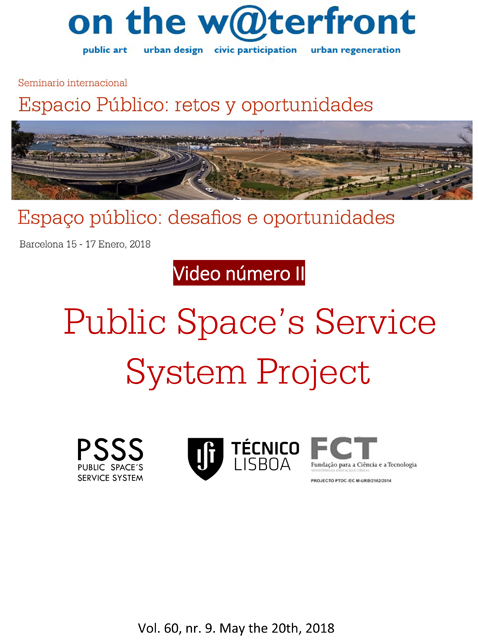Presentation of the Public Space Service System Project
Keywords:
Public Space, Service, quality, interdisciplinarity, systemAbstract
Recognizing public spaces’ importance, it is necessary to better evidence what it does serve for: its services or benefits, as a principle in evaluating the return of social value, of economic, political, emotional investments, how it is produced, how it is organized and how it is related to the actors.
Almost forty years ago, Kevin Lynch analyzed public spaces for their image qualities: vitality, identity, pleasantness, readability, diversity ... Until today, methods do not vary much because of the frequent consideration for new "qualities" that ‘good public space’ is supposed to posess. In the end, Lynch was in fact criticizing his own construct:
The 'perceptual qualities' of 'mental image' can be opposing each other, or be illusory. So, how to evaluate them? Quality indicators, which only sometimes refer to the "public", have to accept that there are many types of "publics", and that space "value" is more than the sum of spatial diverse "qualities" (diverse interests, will find in public space different value). Thus, the evaluation must interpret space, clarifying the multiplicity and variability of services provided by it and demonstrate the values that are involved and the system that organizes them.
We can thus look at public spaces as part of a system (like other urban systems, infra-structural landscape…) and consider in their potential validation, systems’ physical or relational factors: production, organization, limits, context, connectivity, actors, values, services, representations.
This project's fundamentals are:
• "Space construction” deals with urban public space systems and the practices of "right to the city" (H. Lefebvre), both on Hardware and Software.
• Interdisciplinary mode is the assuming of the subjectivities in the multi-dimensional rational, making cross-evaluations, of different realities (and their actors).
• The interaction process requires a common language to translate values and meanings of space, as a service of public benefit. To interpret the public space system we can’t isolate... nor eliminate variables, unless we integrate them... in the process.
Downloads
Published
How to Cite
Issue
Section
License
The
 licence allows: Share — copy and redistribute the material in any medium or format and Adapt — remix, transform, and build upon the material for any purpose, even commercially.The licensor cannot revoke these freedoms as long as you follow the license terms. Author's rights are protected by the ISSN 1139-7365. On the w@terfront has no restrictions respect the copyright by the authors and does allow authors to retain the publishing rights without restrictions.
licence allows: Share — copy and redistribute the material in any medium or format and Adapt — remix, transform, and build upon the material for any purpose, even commercially.The licensor cannot revoke these freedoms as long as you follow the license terms. Author's rights are protected by the ISSN 1139-7365. On the w@terfront has no restrictions respect the copyright by the authors and does allow authors to retain the publishing rights without restrictions.This journal does not apply any type of charge to the authors for the presentation or processing of the articles.







